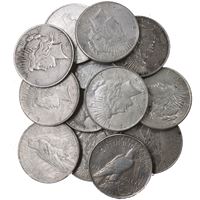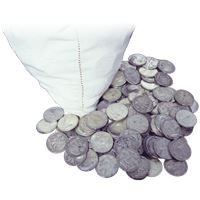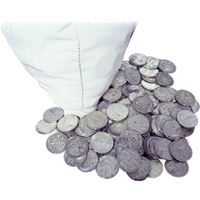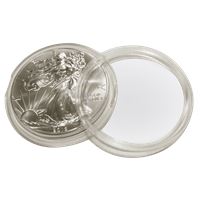What U.S. Coins Are Silver? Comprehensive List With Photos
All dimes, quarters, and half dollars minted in the United States before 1965 are made from 90% silver. Simply checking the date of your coin will tell you if it is silver or not.
The U.S. has been minting silver coins since 1794, but you will find that virtually all coin denominations stopped using silver after 1964. The half dollar and dollar coins were reduced from 90% silver to a 40% silver composition for a brief time until the U.S. Mint switched to using cheaper metals in the 1970s.
Today, the only U.S. coins currently in production that contain silver are commemorative coins, special collectibles, and American Silver Eagles. The best place to buy silver coins today is from a coin shop or bullion dealer like Gainesville Coins. Visit our website to browse our inventory of U.S. silver coins or call us at 813-482-9300 to place an order.
What follows is a complete list of regular-issue United States coins that are made with silver. The coins are listed in ascending order from the smallest silver weight to the largest. Within that order, they are also listed chronologically from oldest to newest. Photos of each coin type are found beneath the chart.
| 3-Cent trime | 1851–1873 | 0.0217 oz | 0.675 g |
| Flowing Hair half dime | 1794–1795 | 0.03834 oz | 1.1926 g |
| Bust half dime | 1796–1837 | 0.03863 oz | 1.2015 g |
| Liberty Seated half dime | 1837–1873 | 0.03877 oz | 1.206 g |
| Jefferson war nickel | 1942–1945 | 0.05626 oz | 1.75 g |
| Bust dime | 1796–1837 | 0.07726 oz | 2.4 g |
| Seated Liberty dime | 1837–1891 | 0.07726 oz | 2.4 g |
| Barber dime | 1892–1916 | 0.07234 oz | 2.25 g |
| Mercury dime | 1916–1945 | 0.07234 oz | 2.25 g |
| Roosevelt dime | 1946–1964 | 0.07234 oz | 2.25 g |
| 20-Cent piece | 1875–1878 | 0.14468 oz | 4.5 g |
| Draped Bust quarter | 1796–1838 | 0.19286 oz | 5.99 g |
| Seated Liberty quarter | 1838–1891 | 0.1933 oz | 6 g |
| Barber quarter | 1892–1916 | 0.18085 oz | 5.625 g |
| Standing Liberty quarter | 1916–1930 | 0.18085 oz | 5.625 g |
| Washington quarter | 1932–1964 | 0.18085 oz | 5.625 g |
| Flowing Hair half dollar | 1794–1795 | 0.38572 oz | 11.99 g |
| Bust half dollar | 1796–1839 | 0.38572 oz | 11.99 g |
| Seated Liberty half dollar | 1839–1891 | 0.38658 oz | 12.024 g |
| Barber half dollar | 1892–1915 | 0.3617 oz | 11.25 g |
| Walking Liberty half dollar | 1916–1947 | 0.3617 oz | 11.25 g |
| Franklin half dollar | 1948–1963 | 0.3617 oz | 11.25 g |
| Kennedy half dollar (90%) | 1964 | 0.3617 oz | 11.25 g |
| Kennedy half dollar (40%) | 1965–1970 | 0.14789 oz | 4.6 g |
| Flowing Hair dollar | 1794–1795 | 0.77144 oz | 23.99 g |
| Bust dollar | 1795–1804 | 0.77144 oz | 23.99 g |
| Seated Liberty dollar | 1840–1873 | 0.77345 oz | 24.057 g |
| Trade dollar | 1873–1885 | 0.78763 oz | 24.498 g |
| Morgan dollar | 1878–1921 | 0.77344 oz | 24.06 g |
| Peace dollar | 1921–1935 | 0.77344 oz | 24.06 g |
| Eisenhower dollar | 1971–1978 | 0.3161 oz | 9.83 g |
| American Silver Eagle | 1986–present | 1 oz | 31.1 g |
| Commemorative silver coins | 1892–present | varies | varies |
How to Calculate the Melt Value of Any U.S. Silver Coin
The actual silver weight (ASW) is included for each listing. The ASW is the amount of pure silver in each coin.
You can roughly calculate the silver content of any U.S. silver coin by using this formula:
silver spot price × 0.715 × face value of the coin
where the face value is a fraction of 1.0, so that the 10 cents of a dime equals 0.10, the 25 cents of a quarter equals 0.25, and so on.
In reality, each $1 of face value of old U.S. silver coins should have about 0.7234 troy ounce of actual silver weight. In practice, however, we use 0.715 to account for the fact that most of these silver coins will have had some of their metal content worn away due to circulation (being handled, rubbing against other coins, etc.).
You can also skip the math by consulting a great resource called Coinflation that lists the approximate melt values of all North American silver coinage.
If you have any of the coins on this list and want to sell your silver coins, follow the link to sell them to Gainesville Coins.
Comprehensive List of U.S. Silver Coins
Three Cent Silvers – 1851–1873
ASW: From 1851 to 1853, 0.0193 troy ounce (0.6 gram). From 1854 to 1873, 0.0217 troy ounce (0.675 gram).
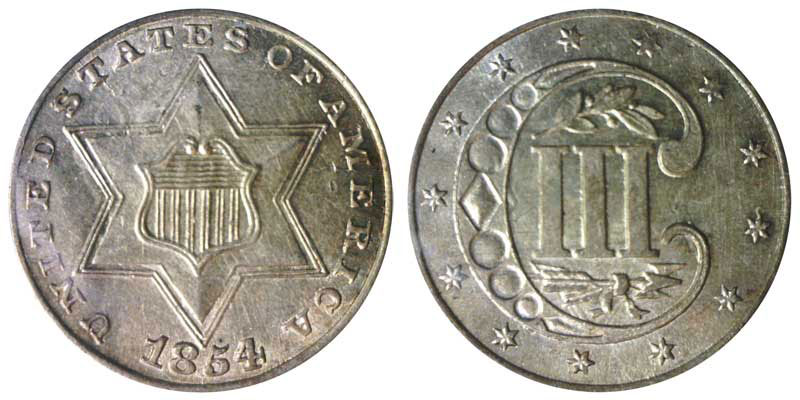
The small three-cent silver pieces were also known as "trimes."
Flowing Hair Half Dimes – 1794–1795
ASW: 0.03834 troy ounce (1.1926 grams)
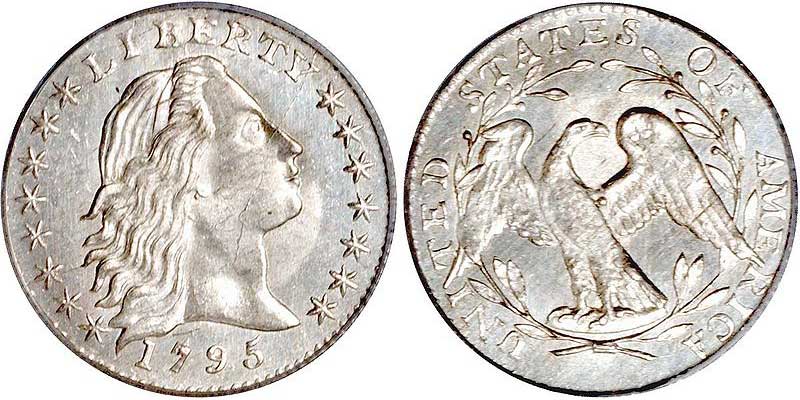
These half dimes were among the first coins ever struck at the United States Mint.
Bust Half Dimes – 1796–1837
ASW: 0.03863 troy ounce (1.2015 grams)
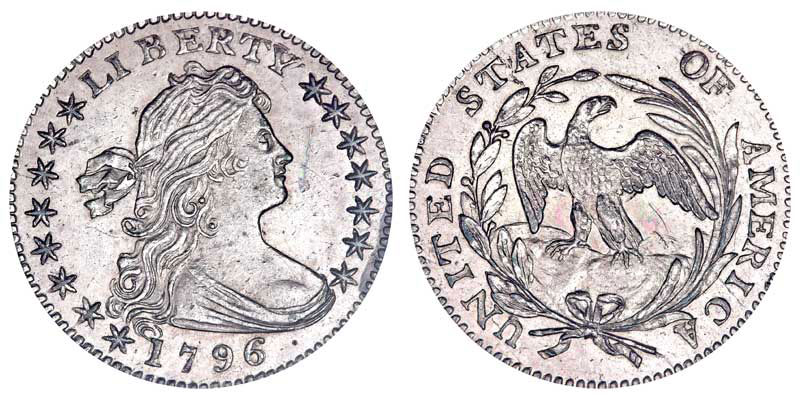
Both the Draped Bust and Capped Bust half dimes were 89% silver.
Liberty Seated Half Dimes – 1837–1873
ASW: 0.03877 troy ounce (1.206 grams)
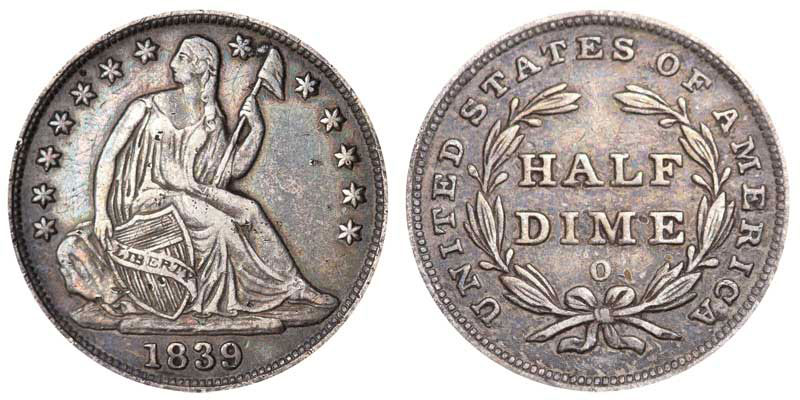
Seated Liberty half dimes were the first to use the 90% silver standard.
Wartime Jefferson “Nickels” – 1942–1945
ASW: 0.05626 troy ounce (1.75 grams)
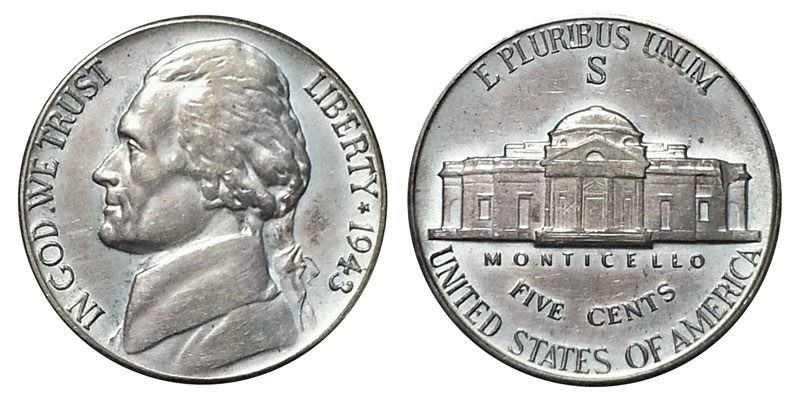
You can distinguish 35% silver "war nickels" by the large mintmark on the reverse.
Bust Dimes – 1796–1837
ASW: 0.07726 troy ounce (2.4 grams)
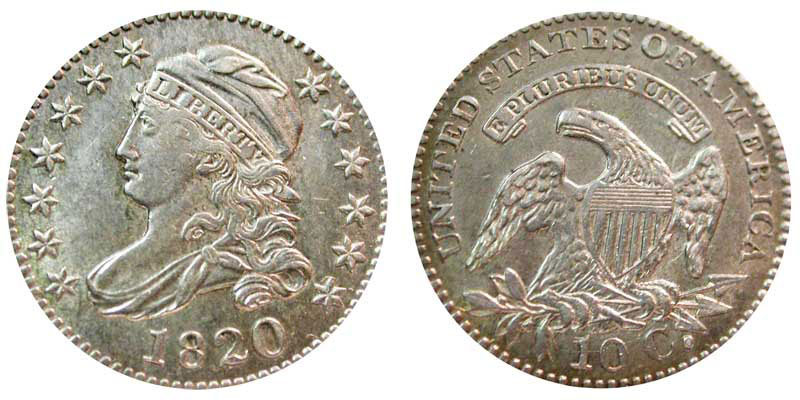
Although the diameter of the dime was reduced in 1828, its silver content remained the same.
Seated Liberty Dimes – 1837–1891
ASW: 0.07726 troy ounce (2.4 grams)
.jpg)
The Seated Liberty design was used across many denominations in the 1800s.
Barber Dimes – 1892–1916
ASW: 0.07234 troy ounce (2.25 grams)
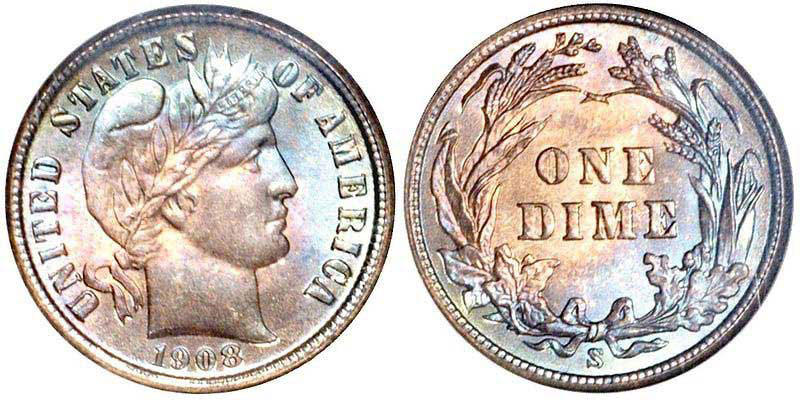
The Barber dime exemplifies the common design theme seen across U.S. silver coins after 1892.
Mercury Dimes – 1916–1945
ASW: 0.07234 troy ounce (2.25 grams)
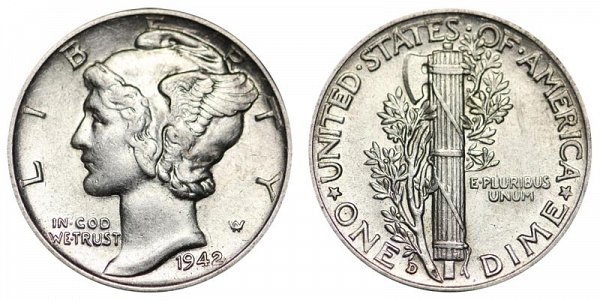
The Mercury dime was officially known as the "Winged Liberty" dime, but the nickname stuck.
Roosevelt Dimes – 1946–1964
ASW: 0.07234 troy ounce (2.25 grams)
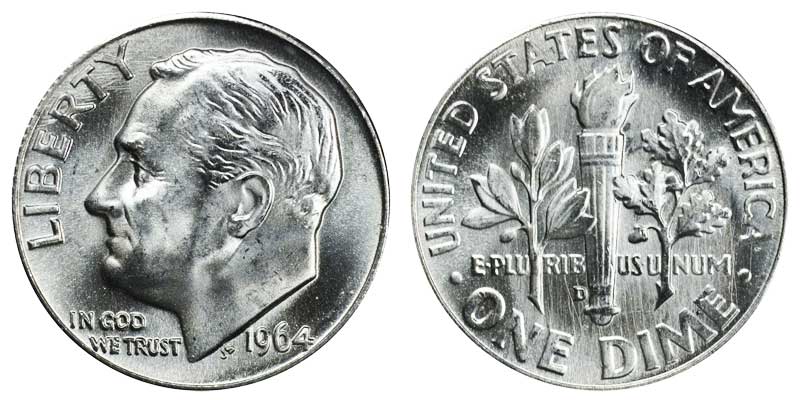
The coin's design commemorated the late president Franklin D. Roosevelt.
Twenty Cents – 1875–1878
ASW: 0.14468 troy ounce (4.5 grams)
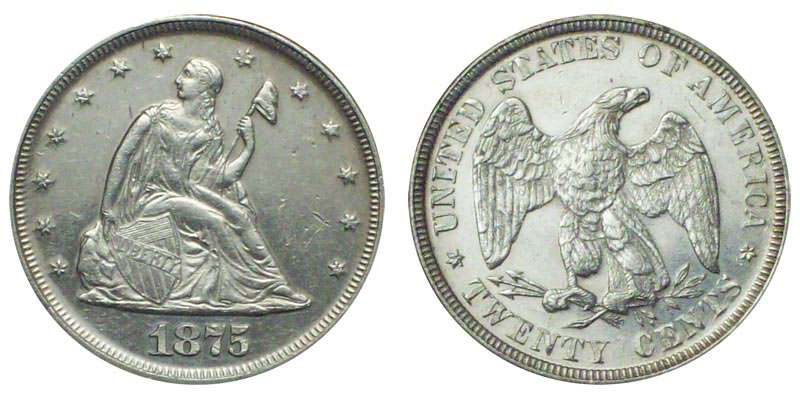
This short-lived denomination was not popular, and was often confused with the quarter dollar.
Draped Bust Quarters – 1796–1838
ASW: 0.19286 troy ounce (5.99 grams)
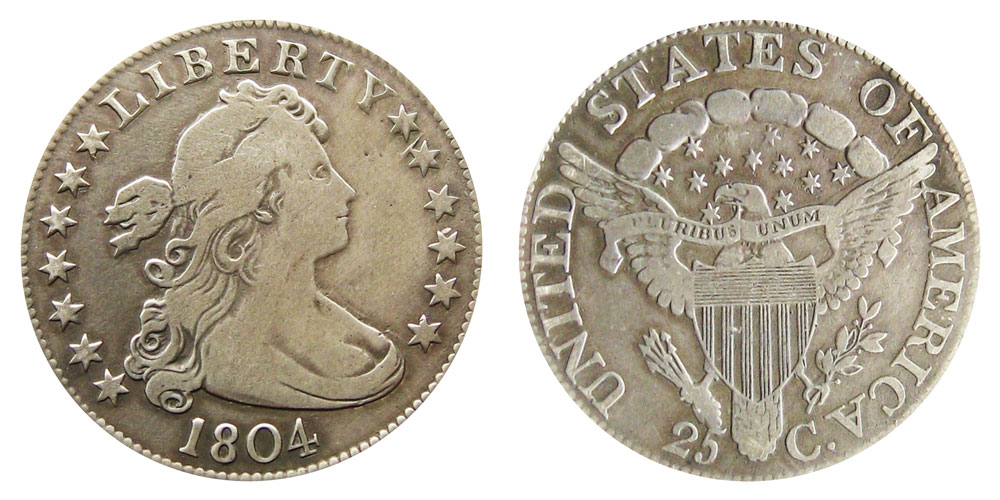
The Draped Bust quarter remains an iconic U.S. coin to this day.
Seated Liberty Quarters – 1838–1891
ASW: 0.1933 troy ounce (6 grams)
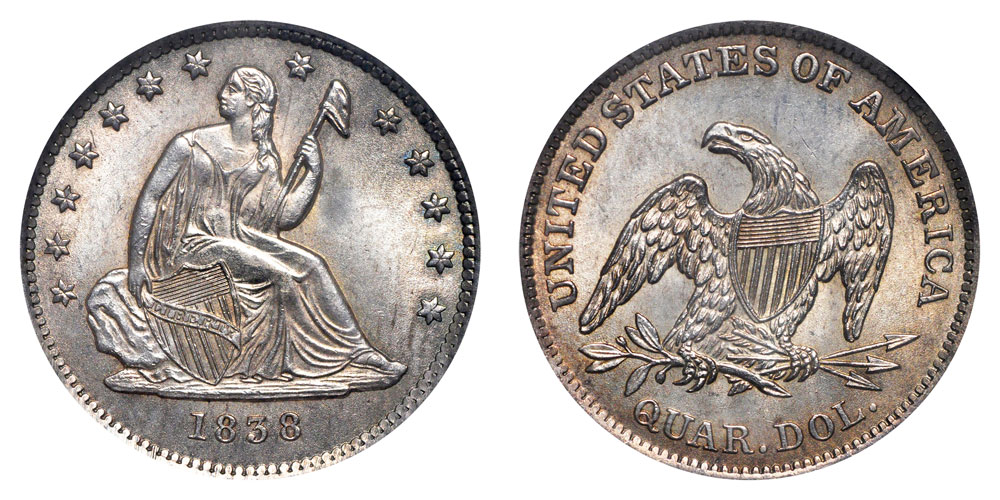
The Seated Liberty quarter contained slightly more silver content than its successors.
Barber Quarters – 1892–1916
ASW: 0.18085 troy ounce (5.625 grams)
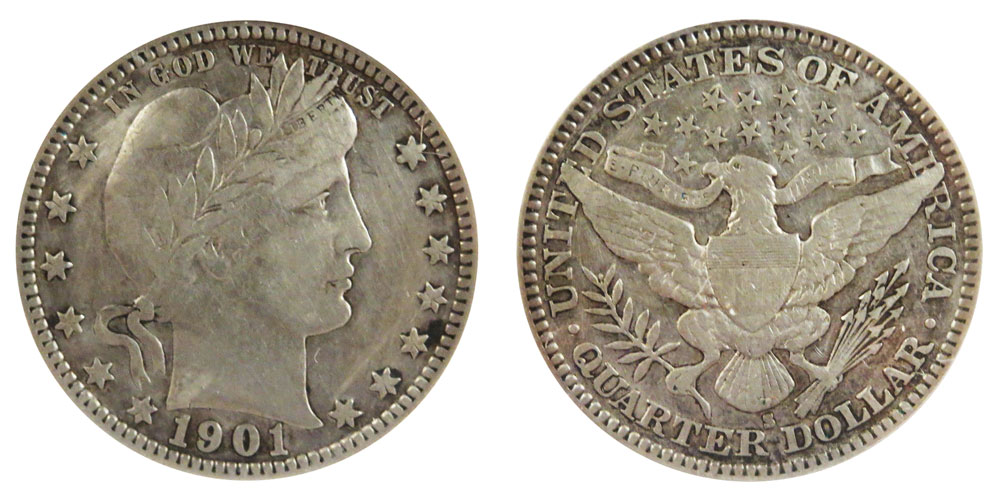
The various Barber coinage is named for its designer, Charles E. Barber.
Standing Liberty Quarters – 1916–1930
ASW: 0.18085 troy ounce (5.625 grams)
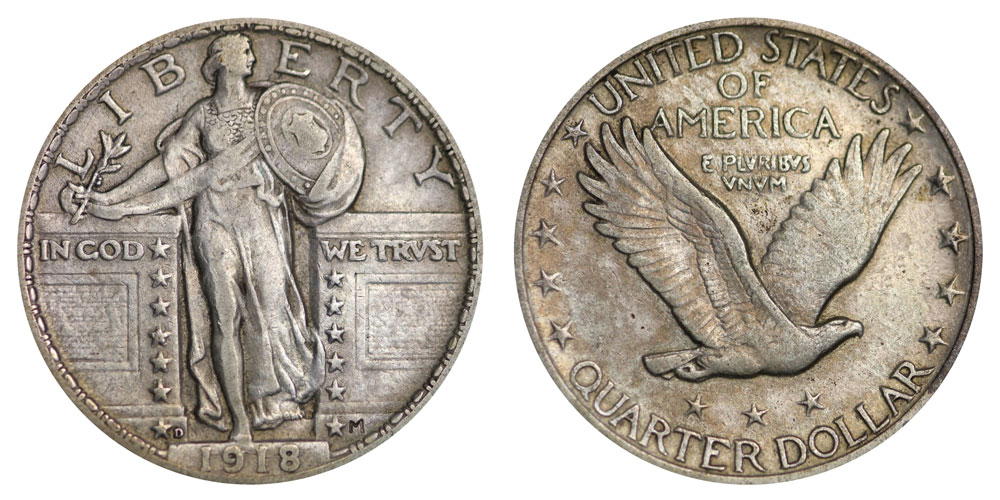
Many consider the Standing Liberty design to be among the best in the history of American coins.
Washington Quarters – 1932–1964
ASW: 0.18085 troy ounce (5.625 grams)
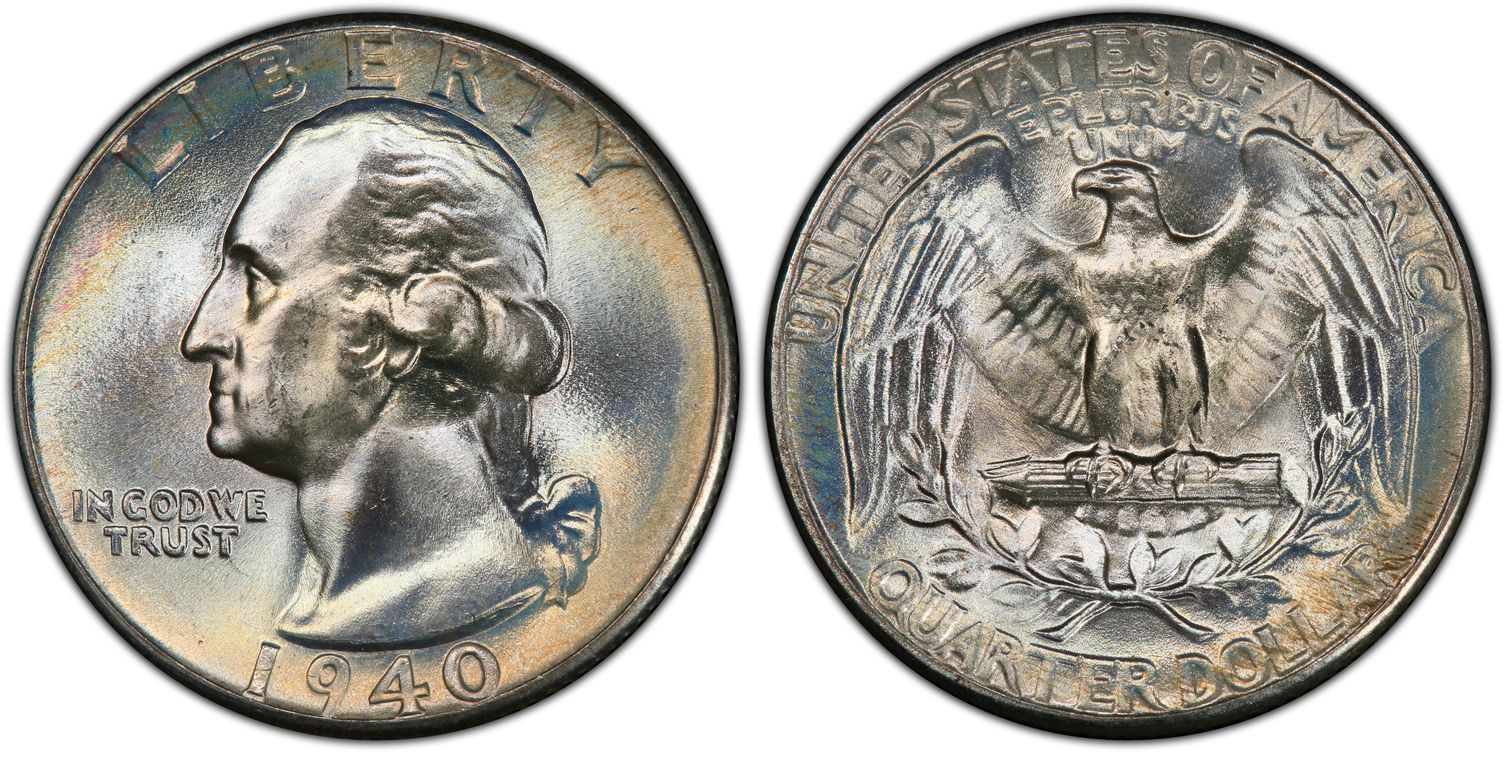
The Washington quarter was originally supposed to be a one-year commemorative, but ultimately the design was kept.
Flowing Hair Half Dollars – 1794–1795
ASW: 0.38572 troy ounce (11.99 grams)
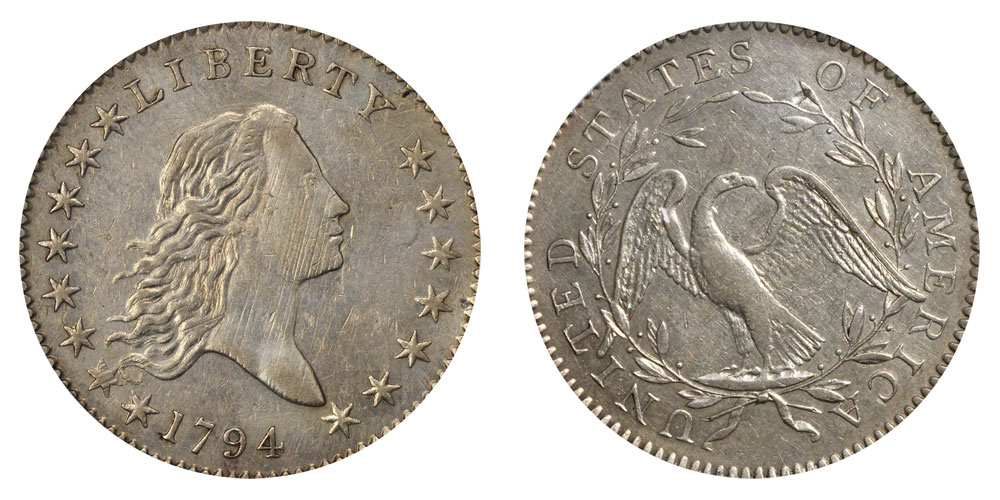
The Flowing Hair half dollar only saw two years of production, much like the silver dollar that shares its design.
Bust Half Dollars – 1796–1839
ASW: 0.38572 troy ounce (11.99 grams)
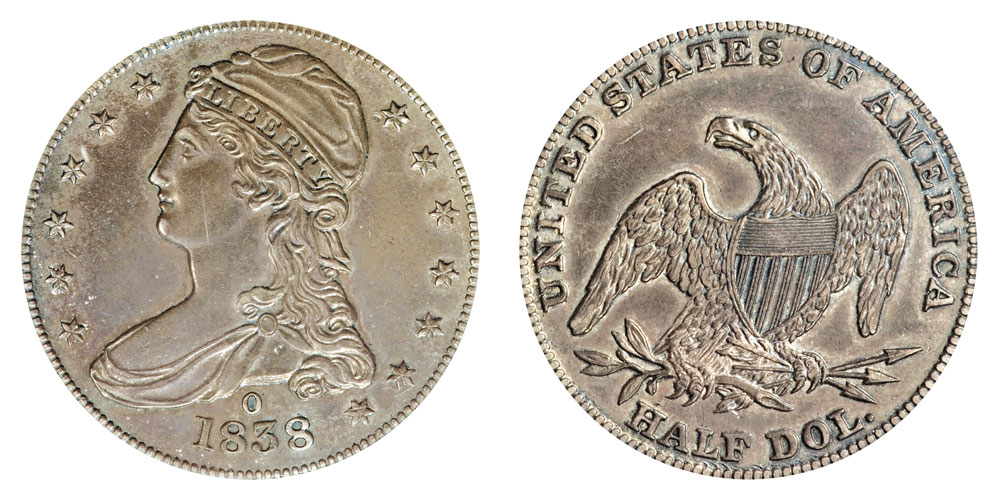
Unlike the Draped Bust type, the Capped Bust designs were the first to consistently list the denomination.
Seated Liberty Half Dollars – 1839–1891
ASW: 0.38658 troy ounce (12.024 grams)
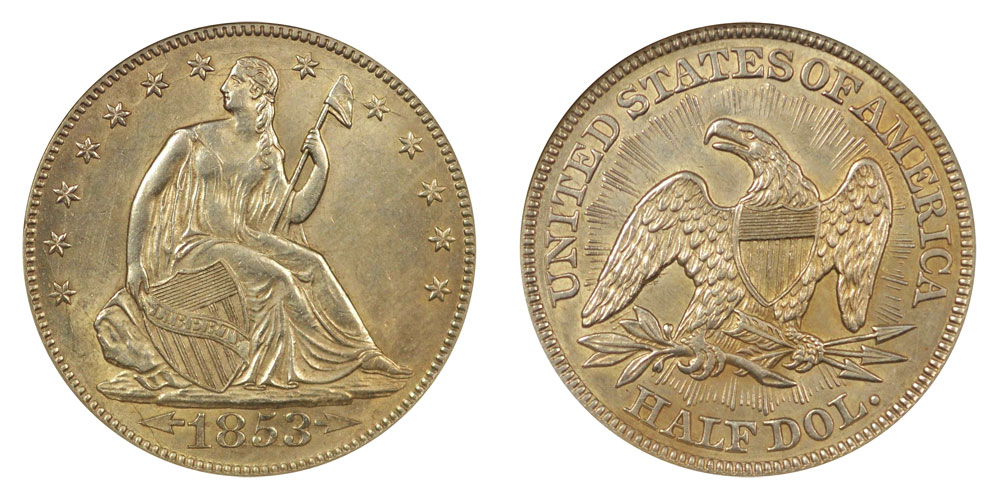
The Seated Liberty theme appeared across U.S. coinage, including the half dollar.
Barber Half Dollars – 1892–1915
ASW: 0.3617 troy ounce (11.25 grams)

Barber half dollars are highly collectible in part due to their widespread circulation.
Walking Liberty Half Dollars – 1916–1947
ASW: 0.3617 troy ounce (11.25 grams)
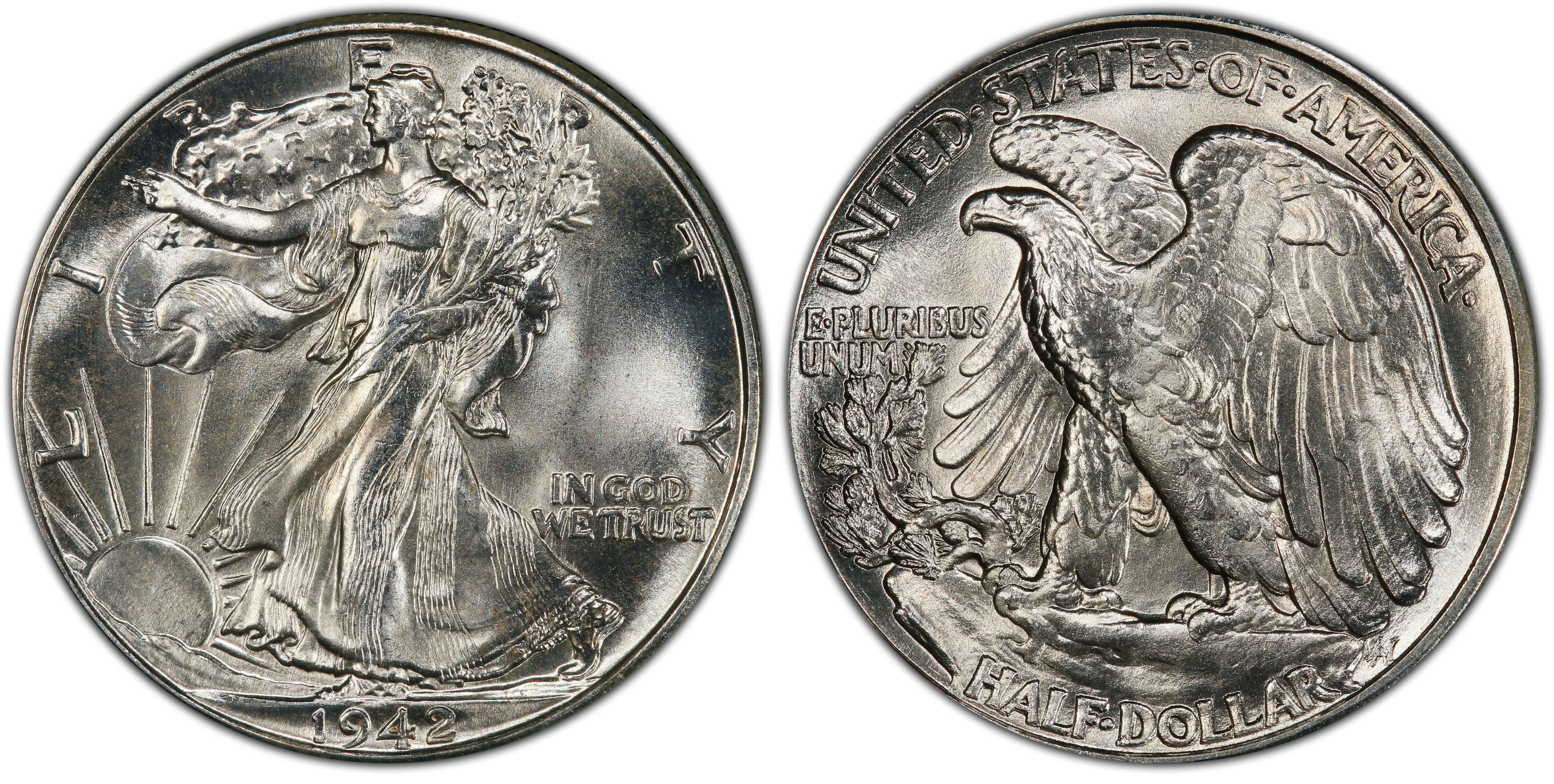
The Walking Liberty design is often considered one of the most beautiful ever to appear on an American coin.
Franklin Half Dollars – 1948–1963
ASW: 0.3617 troy ounce (11.25 grams)
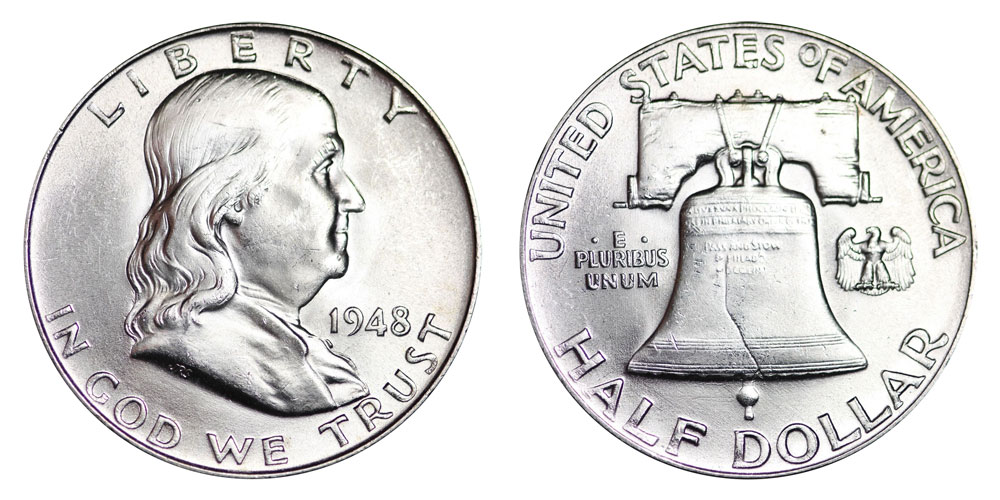
Franklin half dollars had an unusually short run of just 16 years.
Kennedy Half Dollars – 1964–1970
ASW: In 1964, 0.3617 troy ounce (11.25 grams). From 1965 to 1970, 0.14789 troy ounce (4.6 grams).

Only the first year of issue in 1964 featured a 90% silver composition for the Kennedy half.
Flowing Hair Dollars – 1794–1795
ASW: 0.77144 troy ounce (23.99 grams)
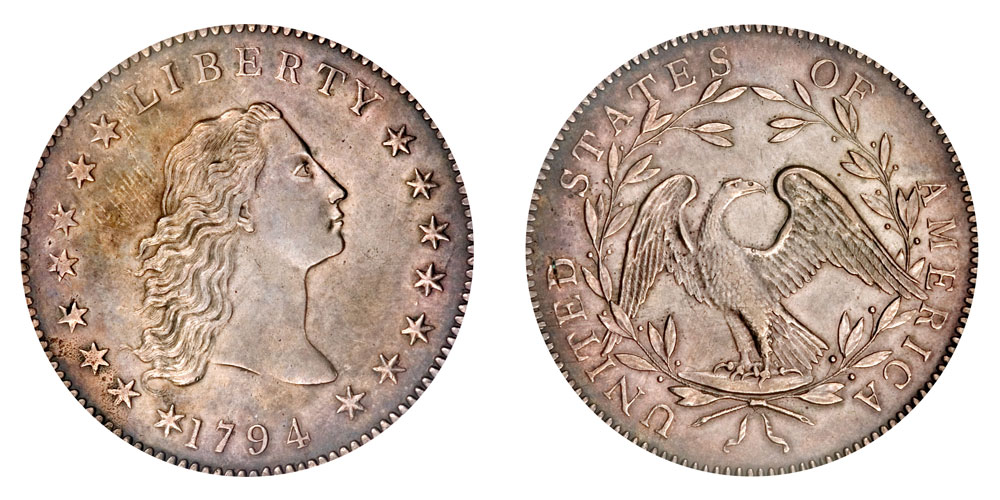
The first-ever silver dollar in the U.S. remains highly sought-after by collectors.
Bust Dollars – 1795–1804
ASW: 0.77144 troy ounce (23.99 grams)
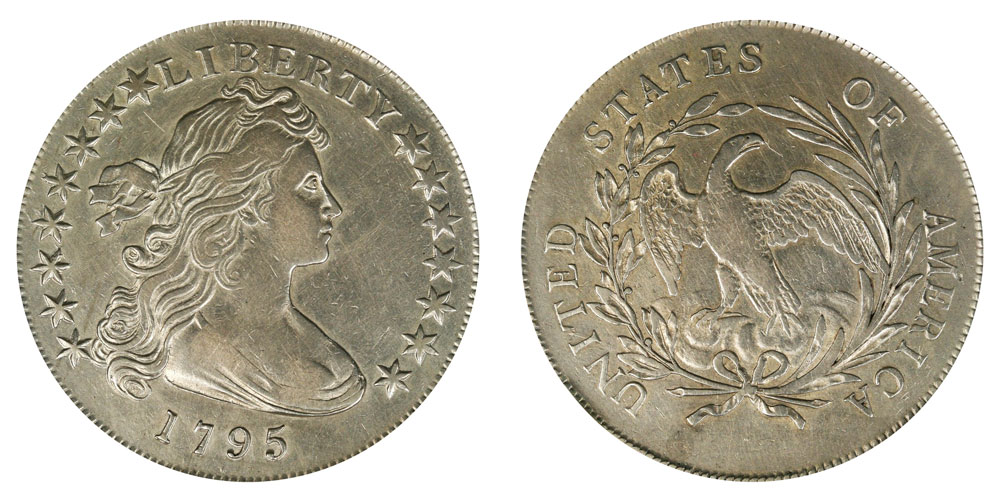
Several reverse varieties of the Draped Bust dollar are known, featuring different eagle designs.
Seated Liberty Dollars – 1840–1873
ASW: 0.77345 troy ounce (24.057 grams)
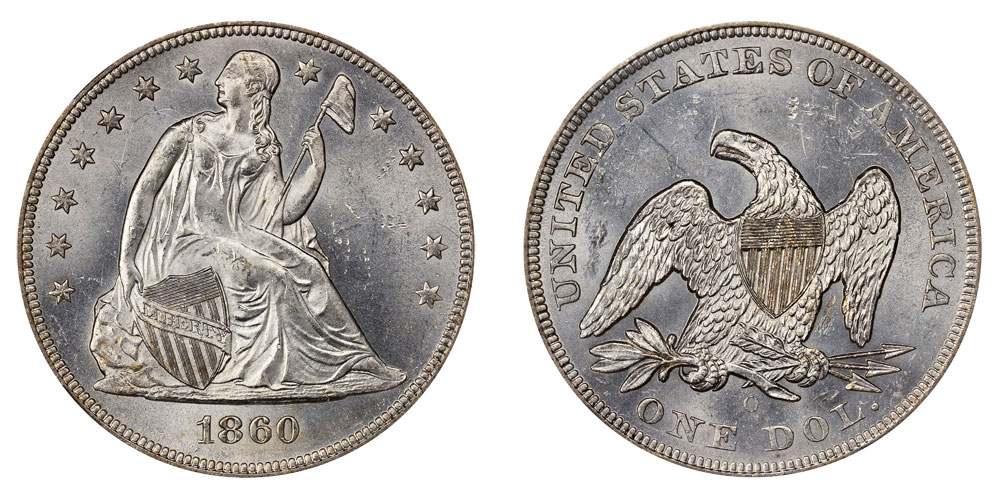
The Seated Liberty silver dollar came in two varieties, adding the motto "IN GOD WE TRUST" beginning in 1866.
Trade Dollars – 1873–1885
ASW: 0.78763 troy ounce (24.498 grams)

The Trade dollar was specifically minted for export demand, particularly in Asia.
Commemorative Coins (quarters, half dollars, and silver dollars) – 1892–Present
ASW: Varies by denomination, but is consistent with all other coins on the list with the same face value.
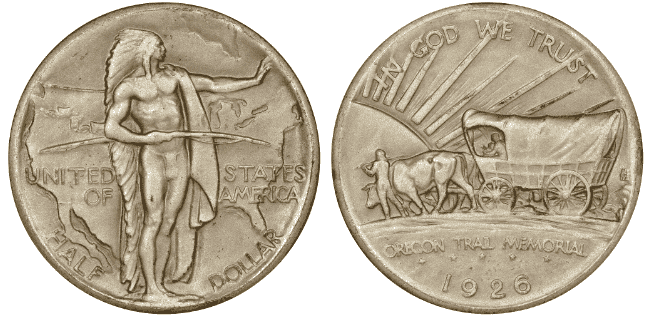
The Oregon Trail commemorative half dollar is a classic example.
Morgan Dollars – 1878–1921
ASW: 0.77344 troy ounce (24.06 grams)
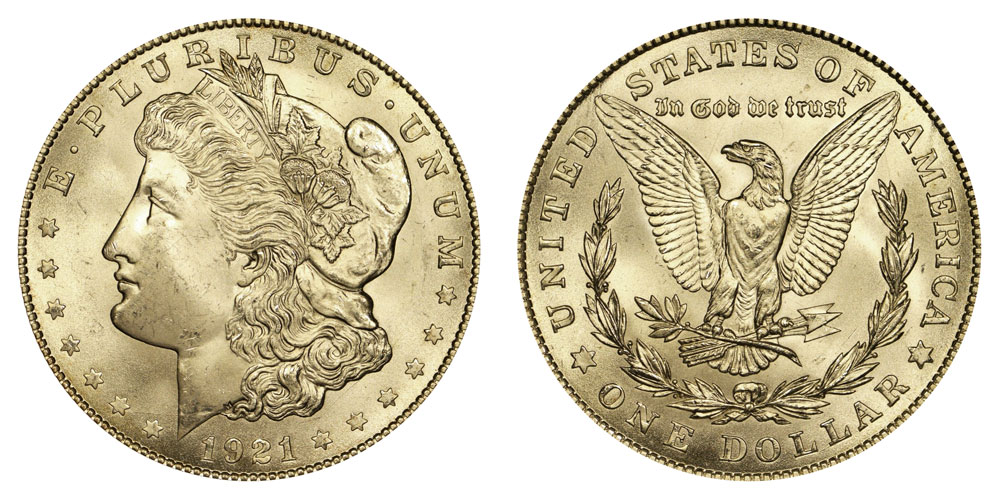
The Morgan dollar is still one of the best-known American coins.
Peace Dollars – 1921–1935
ASW: 0.77344 troy ounce (24.06 grams)
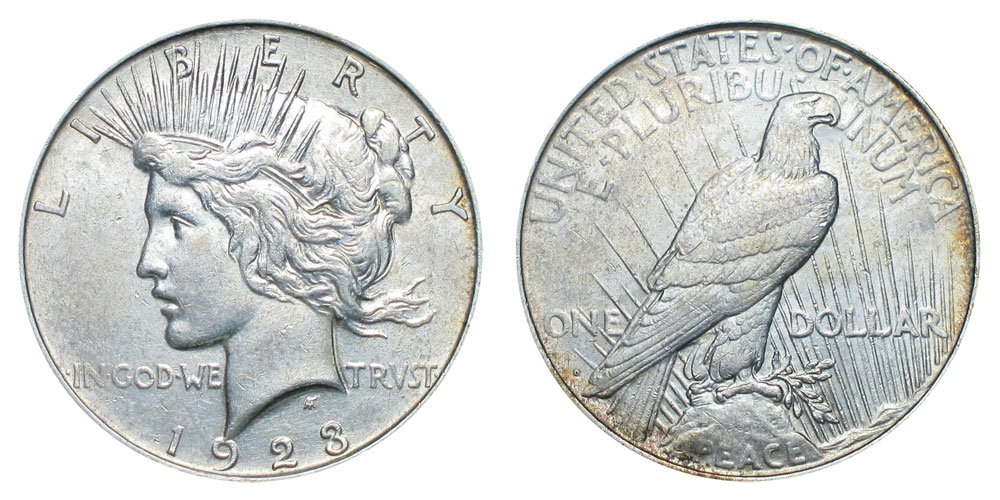
The issuing of the Peace dollar beginning in 1921 was partly to honor the end of World War I.
Eisenhower Dollars – 1971–1978
ASW: 0.3161 troy ounce (9.83 grams)
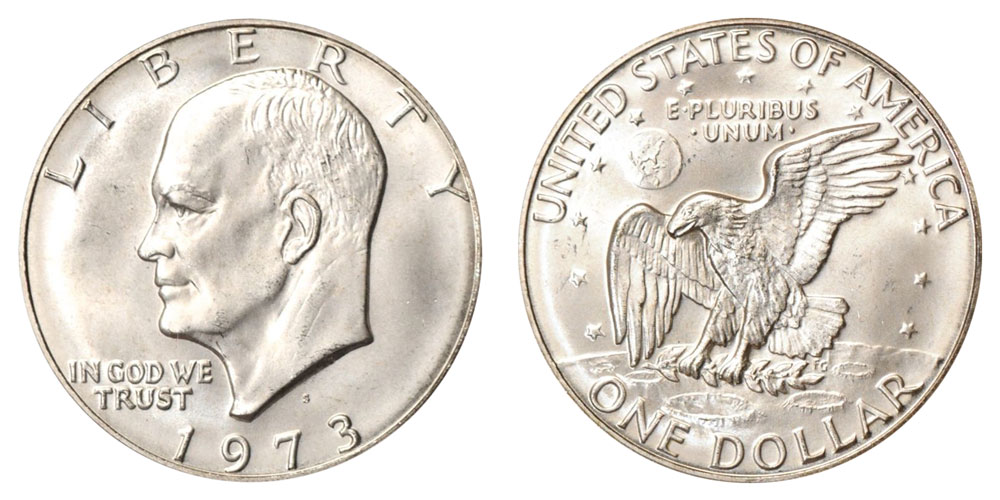
Only collector's Eisenhower dollars made by the San Francisco Mint contained 40% silver.
American Silver Eagles – 1986–Present
ASW: 1 troy ounce (31.1 grams)
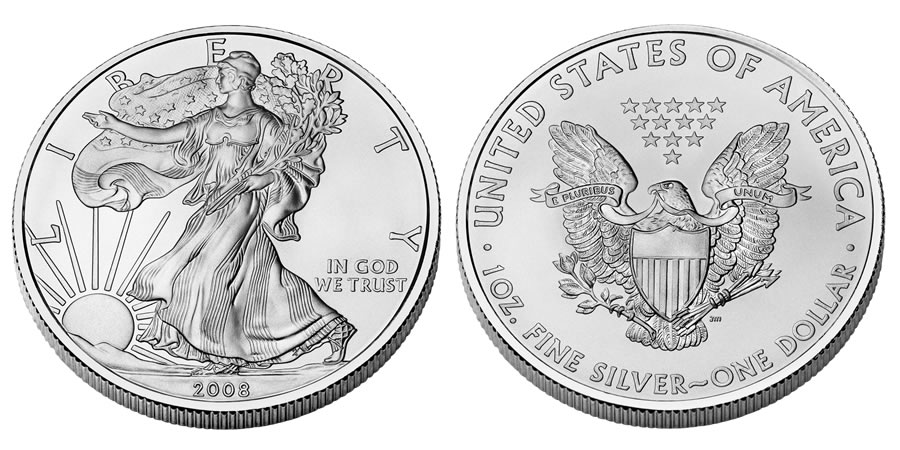
The American Silver Eagle is the only coin on the list that is 99.9% pure silver.
Buy Silver Coins at Gainesville Coins
Browse the product listings below for some of the U.S. silver coins available for sale at Gainesville Coins:
Joshua McMorrow-Hernandez is a journalist, editor, and blogger who has won multiple awards from the Numismatic Literary Guild. He has also authored numerous books, including works profiling the history of the United States Mint and United States coinage.
More information about where to buy precious metals from the authors at Gainesville Coins:
How Much Is a Silver Dollar Worth?
What Are the Different Penny Errors? How Much Are They Worth?
How Much Is a Gold Bar Worth Today?
Silver Coins vs. Silver Rounds: What's the Difference?
The Difference Between Troy Ounce vs. Ounce
What's the Melt Value of an Oscar Statue?
product

